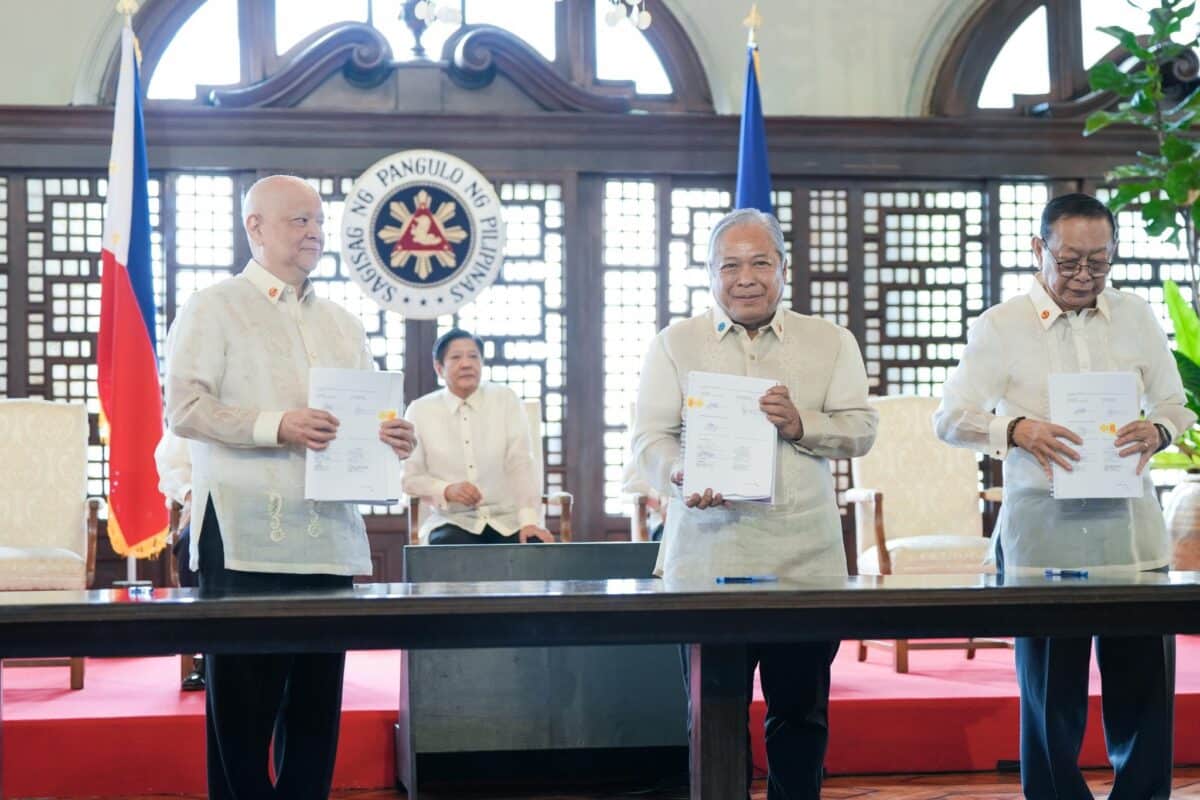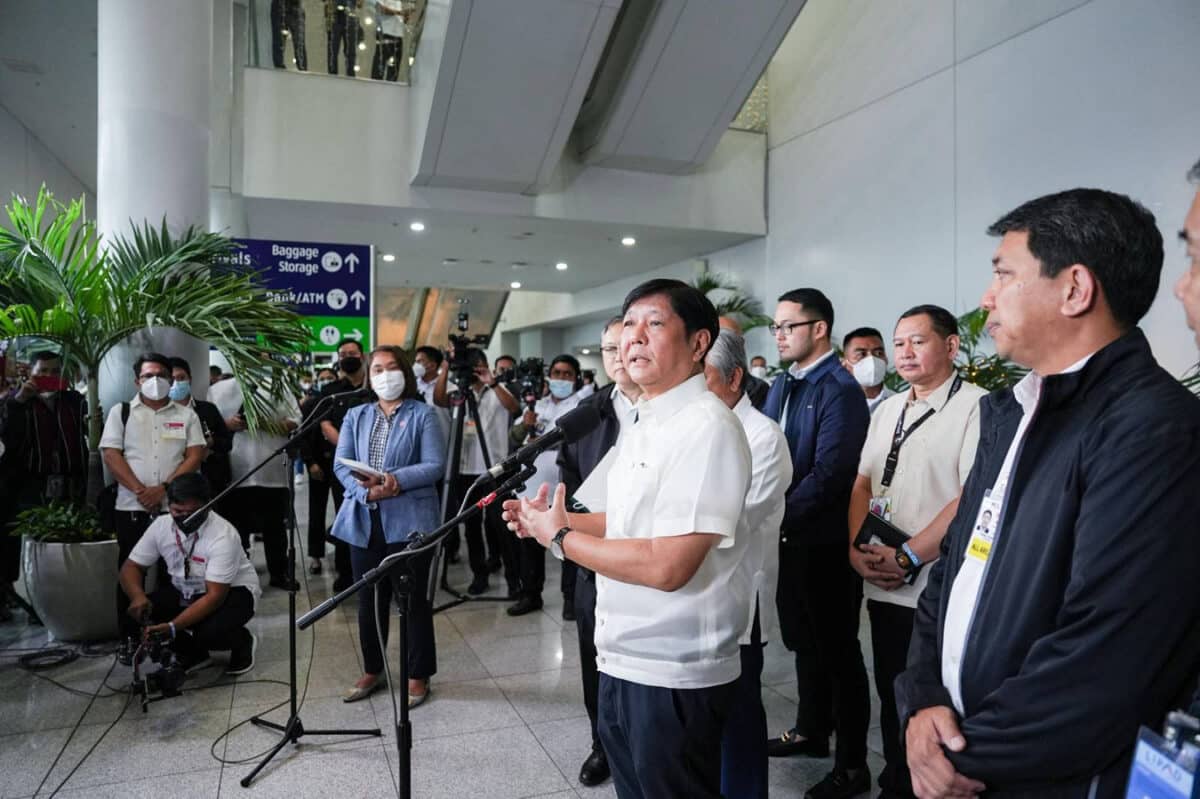By People’s Television Network, Inc. (PTNI)
The successful privatization of the Ninoy Aquino International Airport (NAIA) demonstrates the transformative power of strategic infrastructure investment undertaken by the administration of President Ferdinand R. Marcos, Jr.
Once derided around the word as a symbol of congestion and inefficiency, NAIA is slowly emerging as a model of comfort and efficiency.
From curbside up to boarding gate at NAIA Terminal 3, a recent holiday traveler experienced a seamless airport processing in less than 30 minutes – a far cry from the long queues and outdated facilities of the past. This radical metamorphosis reflects the commitment of Pres. Marcos to modernize the 76-year-old airport.

The transformation follows the President’s bold decision to entrust the rehabilitation and management of Manila’s main gateway to the New NAIA Infrastructure Corporation (NNIC), a consortium led by San Miguel Corp. In just three months, the Public-Private Partnership (PPP) project resulted in streamlined processes, reduced congestion and enhanced passenger comfort.
“This is the transformation we dreamed of for every Filipino traveler,” President Marcos said. “Our goal is to make every journey seamless, every step convenient, and every experience one that reflects the care and commitment of a nation invested in its people.”
A walkthrough of Terminal 3 reveals palpable improvements, from check-in to immigration and security checks. The enhanced security system and streamlined processes have reduced waiting times and increased passenger comfort.
Key changes, such as placing baggage screening before immigration counters and introducing biometric “fly-to-gate” systems, will further optimize passenger flow. The result will be a smoother experience, free from the bottlenecks that once plagued the airport.
Tangible achievements
Since NNIC’s takeover in September 2024, new systems have significantly improved passenger flow. Additional lanes at arrival areas and expanded curbside infrastructure vastly improved vehicle traffic. Terminal curbside lanes will eventually expand – Terminal 1 will have eight lanes compared to three previously; Terminal 2 also to eight from four; and Terminal 3 to 12 from eight.

President Ferdinand R. Marcos Jr. witnessed the signing of the Ninoy Aquino International Airport (NAIA) PPP project concession agreement at the Kalayaan Hall in Malacañang on March 18, 2024. (Photo: PCO)
“Our concessionaire is able to implement great improvements if we compare from our experience in December 2023,” Sec. Jaime J. Bautista of the Department of Transportation said during his inspection of the airport four days from Christmas.
“For example, the arrival area has been decongested because of the additional lanes. In 90 days, they were able to make the additional lane, that’s why we noticed the absence of traffic jams and the free flow of vehicles,” he added.
The transport chief said passengers were pleased with the overall changes at the airport: “Every passenger we talked to was happy. Overall, the experience this Christmas season was good.”
The security checks are now faster. The introduction of modern explosive detection systems and a reconfigured process for baggage screening and immigration will further shorten security check times.
Work in progress
Rehabilitation is a work in progress. Ongoing renovation of Terminal 4, ensuring all air bridges are operational as well as installation of OFW lounges at Terminal 1 and 3 – already improved the overall travel experience. The airport’s free, high-speed internet—with speeds of up to 115 Mbps—further enhances that experience.

President Ferdinand R. Marcos Jr. conducted a site inspection of the Ninoy Aquino International Airport (NAIA) on January 6, 2023, to evaluate its operations. He was accompanied by Transportation Secretary Jaime Bautista, Manila International Airport Authority former General Manager Cesar Chiong, and Civil Aviation Authority of the Philippines (CAAP) Director-General Manuel Antonio Tamayo. (Photo: PCO)
Reliable utilities are also being ensured. To eliminate power fluctuations and ensure consistent operations, the airport now benefits from a dedicated 115KV substation and an advanced uninterruptible power supply (UPS) system.
These changes are not mere cosmetic upgrades but represent a systemic overhaul of how the airport operates. The result is an environment where efficiency and passenger satisfaction take precedence.
Passenger feedback has been generally positive. Travelers now describe NAIA as “unrecognizable” compared to its state just a year ago. One frequent flyer shared, “I used to dread passing through NAIA, but this time, it was a breeze. The process was so quick and efficient; I had time to spare and do some work at an airport coffee shop.”
Holiday travelers, who typically endure the most stressful airport experiences, have also reported smoother journeys.
“NAIA Terminal 1 is OK. The terminals are really old, even the chairs badly need replacement. The changes are slow but visible,” said a Filipino traveler who left for Macau with his family on December 23.
Except for a few kinks and hiccups, NAIA’s handling of over 150,000 passengers daily during the peak season showed improvements in ensuring a hassle-free holiday travel period.
Financial milestones
The administration’s decision to partner with a private concessionaire shifted the financial burden away from taxpayers. Instead, the private sector’s investment and expertise are being leveraged to deliver world-class infrastructure.
NAIA’s significant improvements in just a few months would subsequently be followed by an increase in passenger capacity from 43 million to 62 million annually. Upcoming projects, such as construction of a NAIA Expressway ramp and terminal assignments depict the serious enhancement lined up for the airport.
Sustainability is also a central component of the modernization plan. Solar panels, energy-efficient systems, and improved waste management protocols are being implemented to minimize the airport’s environmental footprint. Drinking water fountains, equipped with paper cups to reduce plastic waste, will soon become available to passengers.
“This is about building a gateway that reflects the aspirations of Filipinos,” President Marcos said. “A world-class airport is not just an infrastructure project; it’s a symbol of our progress and our readiness to welcome the world.”
The modernization of NAIA is more than an infrastructure achievement; it is a legacy project that embodies the Marcos administration’s vision of prioritizing the traveler and focusing on systemic improvements.





